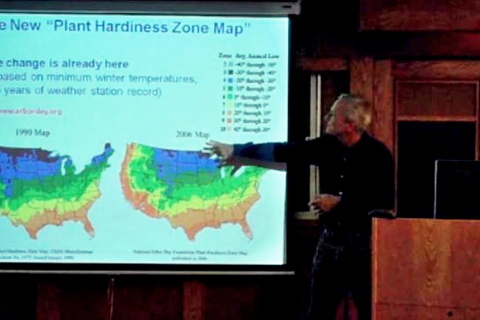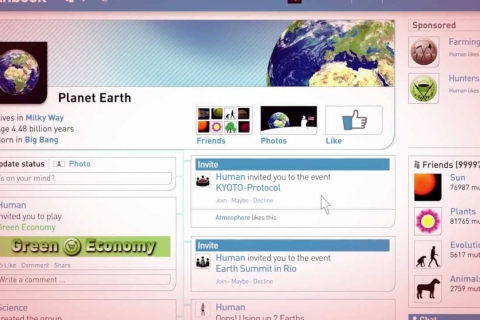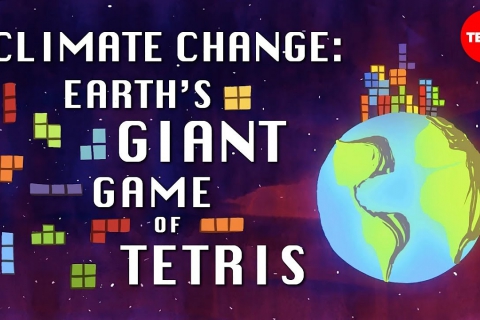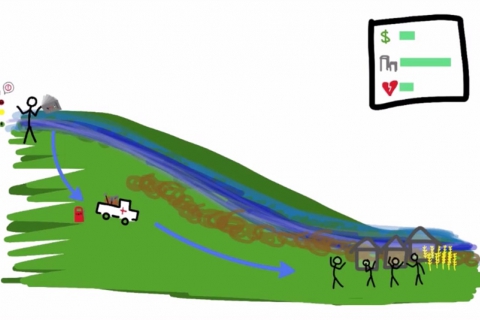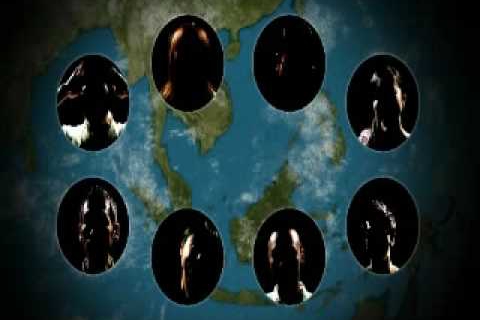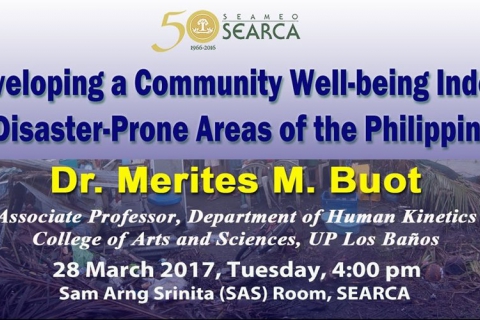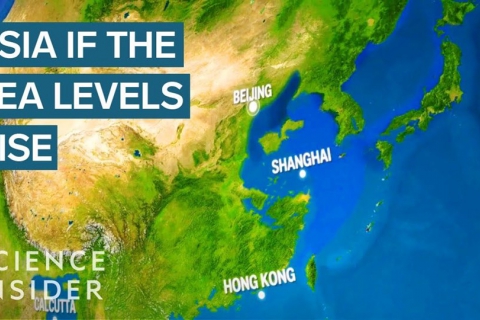This is a six-part series produced by the National Aeronautics and Space Administration (NASA). This video discusses "How Climate Change will impact agriculture"
[Music begins]
Narrator: Climate change is already affecting global food production. And it will probably have even more of an impact in years to come. Carbon dioxide, or CO2, a major greenhouse gas, is a primary cause of global warming. Human activity provides a major source of CO2 in our atmosphere by burning fossil fuels. The rate of increase in global warming due to greenhouse gases is very likely unprecedented within the past 10,000 years or more. But plants use carbon dioxide to grow, so shouldn't warmer temperatures and more carbon dioxide be a good thing for agriculture?
Cynthia Rosenzweig: If it were just the carbon dioxide going up in the atmosphere, agriculture would, all the crops would just smiling and saying great, because high CO2 is good for photosynthesis. So in and of itself it would be good.
Compton Tucker: Climate has an effect upon agriculture in several ways. One would be in the case of the far north, you may have a longer growing season. So areas presently where you can't grow certain crops because it's too cold or the growing season is too short you might be able to grow these crops there as conditions warm up in those areas.
Cynthia Rosenzweig: When we then add in the other effects of climate change, let's first just talk about higher temperatures, then the story becomes more mixed.
Narrator: While a warmer climate might mean some new growing regions, our major agricultural areas will likely face losses. Scientists predict that in many areas on earth, there will be more drought, more fires and warmer temperatures. While a few places may experience cooler temperatures, more rainfall or more intense flooding.
Cynthia Rosenzweig: Vulnerability to climate is uneven across the world. The agricultural studies show that in the mid- and high-latitudes, the agriculture there should actually be ok for at least a while. before the really big temperature changes set in. But in the low latitudes, where it's hot already, and where there are more arid areas, that cimate change will affect those agricultural systems negatively right from the beginning.
Narrator: Because the vast majority of developing countries are located near the equator, these already vulnerable populations are right in the bulls-eye of climate change. In the next 40 years, there could be two billion more people to feed. Much of this population growth is expected to impact countries already facing food security issues. So climate change threatens to exacerbate their risk for inhospitable growing conditions and lack of access to food.
Compton Tucker: Our population is increasing and yet the land on which crops can be grown is not.
Molly Brown: We really have plateaued in our ability to expand yields globally. And so in all the places where we have extremely highly productive systems, those regions are only able to increase their yields by 3 or 4 percent, and while our populations is growing by 8 or 9 percent.
Narrator: Climate change undoubtedly affects us all. So our responses need to be global in nature. NASA satellites give us a big picture, continuous view of our changing climate and how it is already affecting us as a species.
Cynthia Rosenzweig: By providing free satellite data to anyone around the world, NASA is playing a tremendous role for understanding of agricultural production. Scientists in their own countries can be managing their agricultural systems as the climate is changing.
Compton Tucker: It's important to have these data in a continuous way, because the more data you have, then you know the behavior with respect to time. So the continuity, or the continuum, of the data becomes really, really important.
Narrator: NASA satellites provide crucial observations about how our home planet is changing. Continued data from these satellite missions provide information that humanity will need in order to face the challenges of climate change head-on.
Source: NASA




